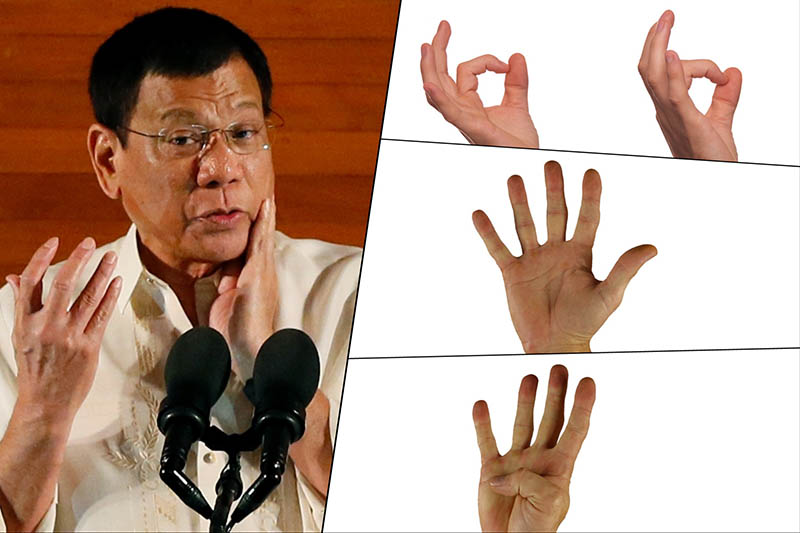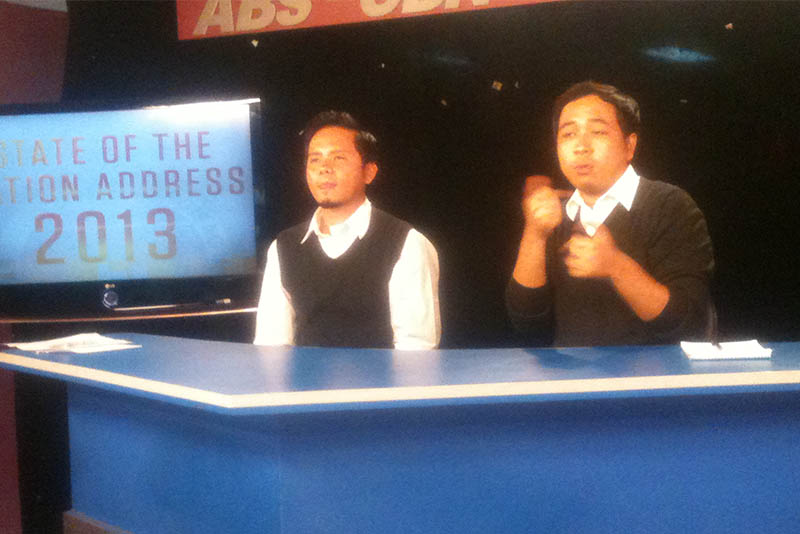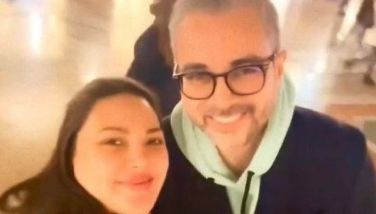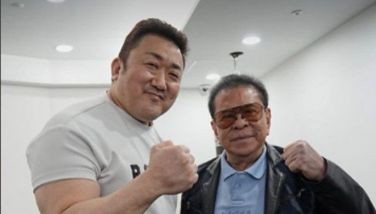Interpreting SONA via sign language is much harder than you think

"If the president curses, I must convey that through sign language."
MANILA, Philippines — Ever noticed that tiny round box on the lower right hand corner of your TV screen during presidential State of the Nation Addresses, presidential inaugurations, the late Chief Justice Renato Corona's impeachment trial, and the congressional inquiry into the deaths of inquiry Special Action Force troopers?
That box shows someone gesturing with his hands to interpret the big event for watchers who are hard of hearing.
It may look something simple. But it's not.
Ask John Xandre Baliza who has been interpreting SONAs from the time of presidents Gloria Macapagal-Arroyo and Noynoy Aquino.
John, who studied at the College of St. Benilde's School for deaf Education and Applied Studies, is serving as the president of the Philippine National Association of Sign Language Interpreters. You'd think sign language interpretation on TV is a breeze for him by now. It's not.
John says it takes years to reach a level of "professional experience and language expertise (in Filipino sign language, spoken Filipino, English and, most recently, Binisaya), and mental processing to do the interpretation in real-time."
John makes sure he knows the sitting president's campaign promises before he or she got elected into office. Since the president doesn't reveal the contents of the SONA, John reads up on comments and speculations about its possible highlights.
He reads up on local and global events. He researches on technical signs and sign names the deaf use for public figures, places like Marawi and high-profile groups like the Maute.
He must think fast on his feet, especially when real-time feedback from the deaf community on social media reveal that they don't understand the interpretation.
On SONA day itself, John spends hours in the studio waiting for grooming, lighting and camera adjustments.
With him is a team composed of a hearing liaison officer, a deaf sign language interpreter and another sign language interpreter.
The hearing liaison officer coordinates logistics with the TV network and does social media monitoring. The deaf sign language expert makes sure interpretation is accurate, and gets feedback from the deaf community in real time. John's fellow interpreter takes over the job 20 minutes after, because the task is mentally taxing.
John must make sure each sign matches every spoken word. He must keep an eye on the computer screen for feedback from the deaf community, and adjust if needed.
All along, his eyes must be riveted on the camera.
He must abide by a code of ethics that requires him to interpret things as they are—no more, no less.
"If the president curses, I must convey that through sign language," he says.
And since he must show impartiality, John assumes a neutral facial expression all throughout the session.
"You must never add color to your interpretation," he explains.
His clothes must be in subdued, neutral colors, free from distracting designs that take the regular viewers' focus away from the SONA.
The job is not even over after the SONA. John reviews the video to check for ways he can improve his work.
Despite all these, the field of sign language interpretation still needs a lot of push. Thankfully, TV networks recognize the need for sign language interpretation, especially in news and public affairs.

John Baliza
"ABS-CBN News and Current Affairs approached De La Salle-College of Saint Benilde School of deaf Education and Applied Studies in 2009 to ask for sign language interpretation for then President Gloria Macapagal- Arroyo's SONA. The Filipino deaf community appreciated this move a lot, because they were able to understand our leader's nationwide report for the first time in Philippine history," John writes in an article for the school's Deaf Education's Bridges Magazine.
Even non-deaf viewers applauded the move. Soon after, rival network GMA also hired a sign language interpreter for its top news coverages. TV5, meanwhile, has a mainstay interpreter for its primetime news and special coverages.
But John thinks sign language interpreting on TV has a long way to go.
For one, he says, foreign networks devote half the screen to sign language interpretation. The Philippines only allots a small corner of the screen to this crucial activity.
In line with this, John also hopes sign language interpretation enjoys a wider reach on mainstream TV. After all, not everybody has internet access or cable subscription.
And unlike most high-profile jobs, interpreting for TV is far from glamorous. It's hard work. You don't do it because many people see your face, along with that of the president's, on nationwide television.
You do it to help the deaf become more aware of what is happening in the country, to feel they belong.
- Latest
- Trending























 Exclusive
Exclusive


